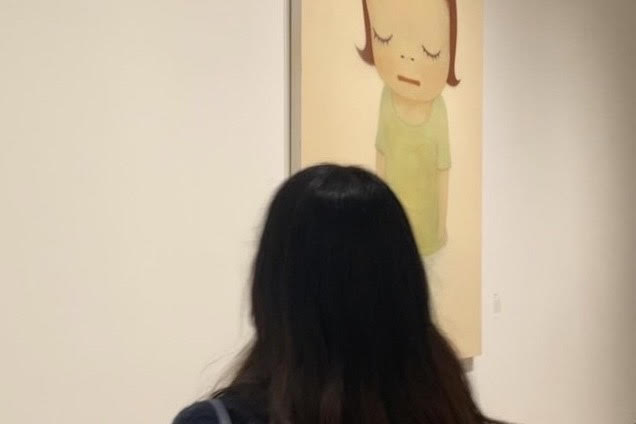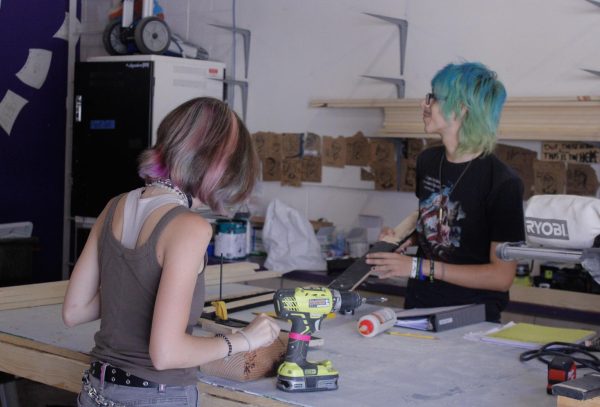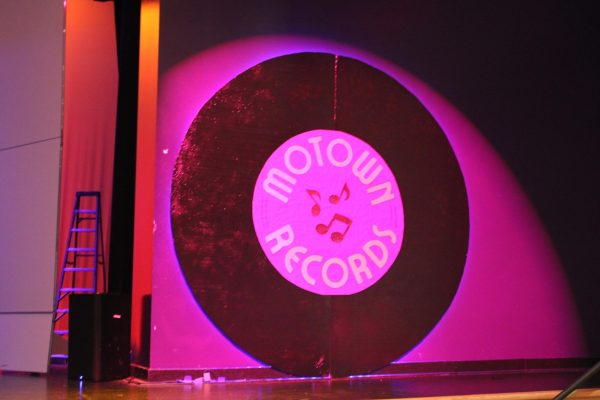Yoshimoto Nara’s LACMA exhibit comes to a close
Ariana Rodriguez and “In the Milky Lake / Thinking One,” at Yoshimoto Nara’s Exhibit at Los Angeles Museum of Art
This January, Yoshimoto Nara’s LACMA Exhibit comes to a close after showing Nara’s artwork to Los Angeles since April 2021. Nara’s exhibit was available to visit for nine months, showcasing his most recognizable portraits that reflect his inner self.
Nara is one of the most beloved Japanese artists who has many recognizable artworks. Memories of his childhood, music, and literature inspire Nara’s art. Nara also incorporates his roots from living in Japan, Germany, and the Russian island of Sakhalin into his artwork. Nara was recently celebrated at the Los Angeles County Museum of Art from April 1, 2021, to January 2, 2022.
The exhibit showed Nara’s conceptual process through paintings, drawings, sculpture, ceramics, and installations that recreate his drawing studio, and never-before-exhibited idea sketches that reflect the artist’s empathic eye.
Nara has grown even more popular because of his LACMA exhibit. Pictures and videos of his exhibit instantly became viral on social media platforms like Instagram, YouTube, and TikTok and articles from LACMA and other art news sources.
“I heard about Yoshimoto’s art from my Tia. She sent me an article about his exhibit in LA and from there I just admired his art and fell in love with it,” said Rancho Cucamonga High School senior Aaliyah Escobar.
Nara is also celebrated especially throughout Asian communities. “I heard about the artist through my mother. As a child, we always went to the museum on weekends as a mother and daughter date. And we always love supporting Asian artists as we are Asian ourselves, we found an interest in his art,” said senior Venise Kang.
Some of Nara’s artwork is iconic. His most famous artwork includes “Knife Behind Back,” which is a large painting where we see a recurrent Nara character named Ramona, who is a young girl with a bob haircut, wearing a red dress with a white collar. Her right arm is hidden behind her body, and it is only from the title of the work that we come to learn that she is hiding a knife.
A cult favorite is Nara’s “Harmless Kitty” which shows a child in a cat onesie sitting on a duck. This image has been seen as a sticker and has been a print on various clothing items.
“My favorite painting of his is his Harmless Kitty painting. It’s super cute and the way the art expresses itself in such a nonchalant but cute way is fascinating!” said Escobar.
Alongside “Ramona,” Nara’s sculpture “White Dog” images have become the artist’s most iconic. The dog has been reproduced as fine art collectables, on T-shirts, as stuffed toys, as numerous novelty items and trinkets. In “A to Z Memorial Dog” the White Dog takes the form of a giant sculpture, its tightly closed eyes and its rehearsed pose that hints strongly at Buddhist meditation. The gloss-white color, meanwhile, carries strong associations with the “white-ghost,” spirit in Japanese culture. Nara’s sculpture “Fountain of Life” was very popular at his LACMA exhibit, gaining a lot of attention online.
“His artwork is different from other contemporary artists and his style is really captivating in all aspects. My favorite piece of his would have to be the ‘Fountain of Life.’” said senior Ariana Rodriguez.
As Yoshimoto Nara’s LACMA exhibit comes to a close, Rancho Cucamonga High School students remember their experiences at the exhibit.
“It was super quiet, I can sense everyone’s appreciation for the art. I looked at the different pieces of art and sculpture displayed there. I enjoyed the different forms of the art the artist used,” said Kang.
“It was so beautiful. Walking through all his different works was so peaceful yet fascinating,” said Rodriguez.






